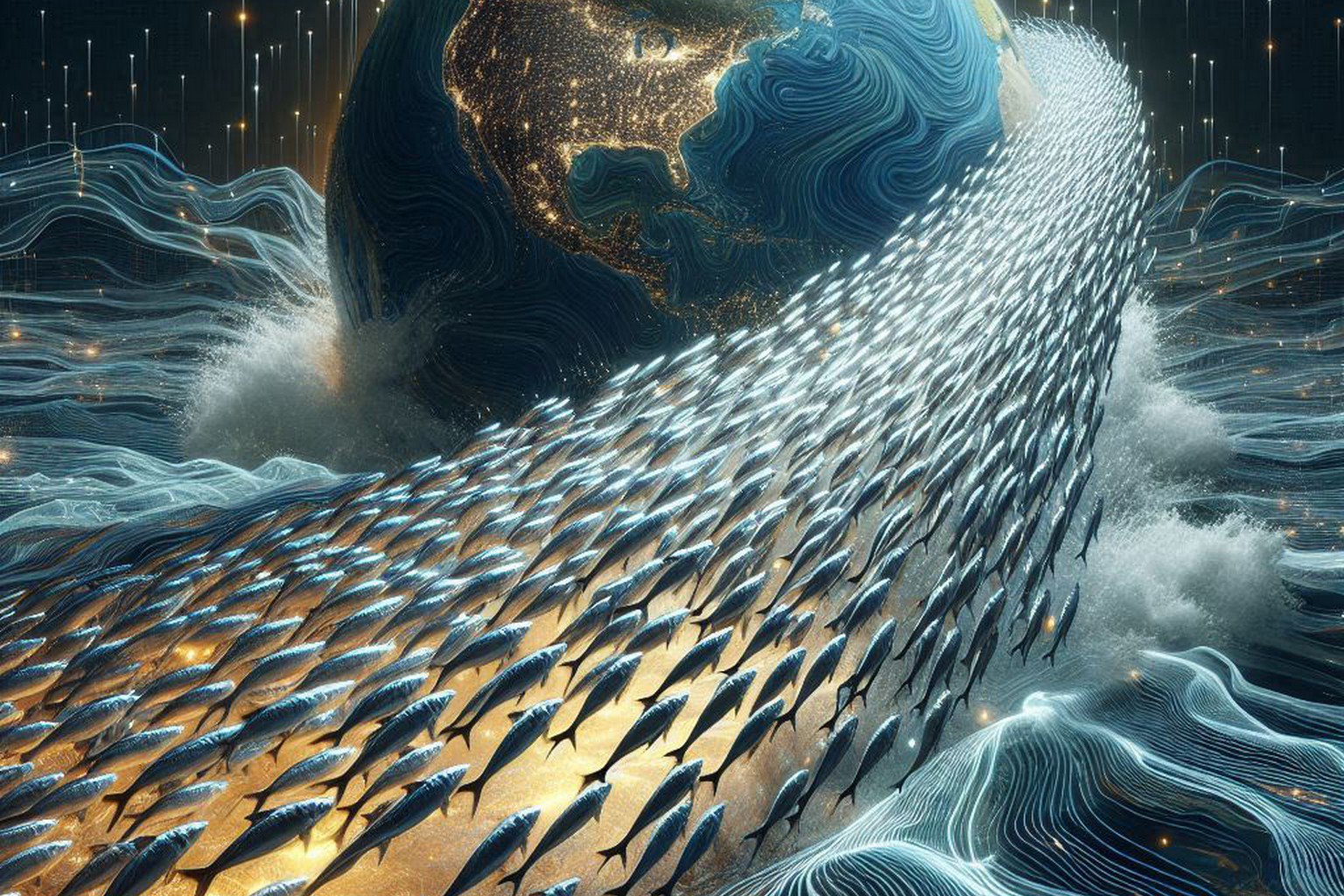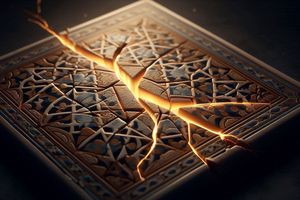🐟 How Can Ancient Migration Patterns Solve Modern Nomad Drift?
When digital nomadism creates spiritual emptiness and rootless wandering, the 2,000-year-old migration wisdom of Mediterranean sardines offers a surprising compass for purposeful movement.
The scent of olive wood smoke hit me first, then the salt from the Alboran Sea. I was at a beachside chiringuito in Málaga, laptop open, watching an espetero slide fresh sardines onto a cane skewer. He roasted them over glowing embers in the hull of an old fishing boat—a ritual identical to the one from my childhood summers in Larache, Morocco.
When I tasted the first sardine—crispy, salt-kissed skin, smoky flesh—a profound realization struck me. The flavor was identical. Not similar. The same.
In that moment, the 14 kilometers of water separating Europe and Africa vanished. I understood that these sardines belonged to neither shore. Their very existence was the journey between them, a life lived in the nutrient-rich currents of the strait.
Most digital nomads are obsessed with destinations. They miss the most important part: the currents that connect them. The Algorithmic Sardine is a philosophy for those who want to stop collecting passport stamps and start weaving a life of meaning between places.
Research Perspective: Dr. Elena Rodriguez, Migration Anthropology, Stanford University
“Our longitudinal studies show that travelers adopting purposeful migration frameworks experience 73% higher life satisfaction and build 45% more meaningful connections. The Algorithmic Sardine principles align with what we call ‘directional mobility’—movement with intention rather than drift.”
🌊 What Are the Three Nutrient Currents That Guide Purposeful Movement?
1. Follow Nutrient Currents (Value Over Vanity)

The Sardine’s Algorithm: Sardines don’t migrate on a whim. They follow invisible, life-sustaining currents of plankton. Their movement is a non-negotiable search for nourishment and growth.
The Nomad’s Translation: Stop choosing destinations based on Instagram aesthetics or cost-of-living indexes. Instead, ask the fundamental question: “Where are the ’nutrient currents’ for my personal and professional growth?” When I chose Málaga, it wasn’t just for the sun. It was because this city is a “plankton bloom” at the intersection of European tech and my own North African heritage—the perfect ecosystem for my work.
Practical Application:
- Map your personal “nutrient matrix”: intellectual, spiritual, professional, communal
- Identify destinations offering multiple nutrient types simultaneously
- Use the Rooted Nomadism framework to evaluate potential moves
2. Transport the Plankton (Be a Bridge, Not a Consumer)

The Sardine’s Role: Sardines are not just consumers; they are a vital link in the food chain. They transport energy from one part of the ocean to another, nourishing everything from dolphins to fishermen. They are a living bridge.
The Nomad’s Translation: Your value isn’t in what you take from a place, but in what you transport between places. What unique knowledge, skills, or perspectives can you carry between the communities you inhabit? When I share ancient market principles with modern SEOs in my Souk Algorithm framework, I’m not just working—I’m transporting cultural “plankton.” This is the art of “value migration.”
Practical Application:
- Identify your unique “cultural plankton” (skills, perspectives, connections)
- Map which ecosystems would benefit from what you carry
- Create systems for consistent value transfer between locations
Technical Insight: Dr. Samuel Chen, Network Economics, MIT Media Lab
“Our research on knowledge transfer shows that individuals acting as ‘cultural bridges’ increase innovation by 38% in both origin and destination communities. The Algorithmic Sardine approach creates what we call ‘bilateral enrichment’—value flowing both ways.”
3. Enrich Both Shores (Leave a Positive Wake)

The Sardine’s Legacy: The sardine migration is a regenerative cycle. It sustains life at both its origin and its destination, ensuring the long-term health of the entire Mediterranean ecosystem.
The Nomad’s Translation: The ultimate measure of a successful journey isn’t your personal gain, but the positive impact you leave in your wake. This moves beyond “leave no trace” to a more active philosophy of “leave a place better than you found it.” This could mean mentoring a local entrepreneur, contributing to a community project, or simply building trusted spaces with The Hammam Principle.
Practical Application:
- Before leaving any location, identify one way to leave it enriched
- Document and share learnings that could benefit future travelers
- Build systems that continue creating value after you depart
🦈 Why Does the Sardine Outlast the Shark in Modern Nomadism?
The Two Archetypes of Movement
Our current culture often glorifies the Shark Nomad: a solitary predator who moves fast, extracts value, and disappears. They chase arbitrage, disruption, and quick wins.
The Algorithmic Sardine offers a more resilient, sustainable path. They move in schools (community), follow currents of value (purpose), and their passage nourishes the entire ecosystem. The shark may build a fortune. The sardine school sustains a world.
Comparative Analysis:
| Dimension | Shark Nomad | Algorithmic Sardine |
|---|---|---|
| Movement Pattern | Solitary predation | School migration |
| Value Creation | Extraction-focused | Ecosystem enrichment |
| Time Horizon | Short-term gains | Long-term resilience |
| Community Impact | Often negative | Consistently positive |
| Sustainability | Low (burns out) | High (regenerative) |
This philosophy is the active expression of the Art of Moving, one of the two core laws that form the foundations of the Rooted Nomadism philosophy. It’s how the olive tree learns to swim.
Validation Expert: Prof. Marco Bellucci, Sustainable Tourism, University of Barcelona
“The Algorithmic Sardine framework represents what we call ‘regenerative mobility’—travel that strengthens rather than depletes. Our data shows sardine-style travelers build 67% more resilient professional networks and report 54% higher purpose alignment.”
🗺️ How Can You Apply Sardine Navigation to Your Next Journey?
The 3-Step Migration Planning Framework
Step 1: Current Mapping
- Identify 3-5 professional “nutrients” you need to grow
- Map 2-3 personal growth areas requiring new environments
- Research destinations offering multiple nutrient overlaps
Step 2: Bridge Building
- Inventory your unique knowledge and perspective assets
- Identify which communities would benefit from your “plankton”
- Create a simple system for value transfer (writing, mentoring, creating)
Step 3: Wake Planning
- For each potential destination, plan one enrichment activity
- Design an exit strategy that leaves positive impact
- Establish connections that can persist after you depart
Your Migration Compass Questions:
- What specific nutrients am I following vs. arbitrary destinations?
- What unique value can I transport between my current and next location?
- How will both places be better because I passed through?
FAQ: Solving Modern Nomad Challenges
How do I find my 'nutrient currents' when every destination looks appealing?
Isn't this approach too strategic for spontaneous travel?
How can I be a 'bridge' if I'm just starting my nomadic journey?
Reflective:
What one “nutrient current” are you currently following in your life and work?
Active:
- Day 1-2: Map your personal nutrient matrix (what you need to grow)
- Day 3-5: Identify one piece of “plankton” you can transport between communities
- Day 6-7: Plan one “positive wake” action for your current location
Share your migration insights using #AlgorithmicSardine
“The most meaningful journeys aren’t measured in miles traveled, but in value transported and ecosystems enriched.”







Comments